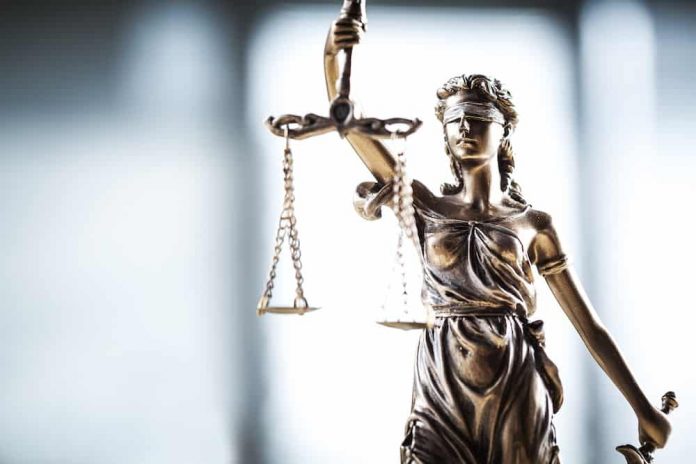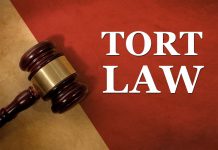This article is written by Ayushi Mahajan, from Centre For Legal Studies, Gitarattan International Business School (Guru Gobind Singh Indraprastha University). This article talks about some of the common law principles and its concepts which rule the litigation sector in India.
Table of Contents
Introduction
Legal principles or legal maxims are a set of rules or procedural steps which are often established as a precedent in common law with which the judgments can be determined in a given case. The legal maxims are a set of principles which are established or the proposition of law or a legal policy which are usually prescribed in the Latin forms. Many of the Latin maxims have their origin from the medieval era from the European states which used Latin as their legal language. These legal principles guide the courts all over the world applying them as a fair and just manner to enable the courts deciding the issues before it. Such principles or rules do not have any kind of authority of the law but when the courts apply them in deciding the issues of a case or law, it incorporates such maxims while framing laws, they use to take the form of law and then form a basis of sound judgments.
Legal Maxims or rules that are followed by the courts of India are
Ab initio
It means from the very beginning of the law, it is a bad act. Such a term is to be used in the reference of law or agreements or a deed which is executed between two parties or marriage, etc. If something is said to be void ab initio, that thing was never created or came into existence:
- The Supreme Court used this Latin maxim “ab initio” to arrive at the conclusion that the proceedings are ab initio defective as far as they could not have been instituted since the firm in whose name the proceedings were conducted was not even registered at the date of the institution of proceedings – Delhi Development Authority V. Kochhar Construction Work & Ors.
- Void marriages are said as Void ab initio which means that in the eye of the law, that marriage has never come into being – Manjeet Singh v. Parson Kaur.
- The transactions of the sale which are made during the pendency of the proceedings were held to be wholly void ab initio and illegal and therefore the same were held to not to be sustainable in the context of law – R. Rajashekhar & Ors. V. Trinity House Building Co-operative Society & Ors.
- A purchaser who after the notification under Section 4 of the Land Acquisition Act, 1894 does not acquire any right on the land as the sale of the land was void ab initio and was having no right to claim land under the policy – Shiv Kumar & Ors. V. Union of India & Ors.
Actus dei nemini injuriam
The law holds no man responsible for the act of God.
- The court held that the strike to be an act of the god and then held that the maxim actus dei nemini facit injuriam applicable to such cases. The court further stated that in some abnormal situations like the strike in question, which can hardly be resisted by any litigant by applying any amount of the skill or the ability of his own, the courts should not insist for the strict adherence to any procedural law so as to prejudice the interest of such litigants. In the legal sense, such kind of incidents are covered by the expressions of “acts of god” – Mali Ram Mahabir Prasad V. Shanti Debi & Ors.
Actio personalis moritur cum persona
A personal right or any action of a person dies with that person.
Supreme court held that the maxim “action personalis moritur cum persona” which means a personal action of a man dies with the person and has a limited application which operates in a limited class of the actions such as:
- Actions for defamation and damages,
- Actions which are there for assault,
- Actions for any other personal injuries which do not cause the death of the party,
- Acts where the relief which is granted, after the death of the party, cannot be enjoyed or given.
- It was held in the case that an action for an account is not an action for the damages and it does not fall within the enumerated classes. Nor is it such that the relief which is claimed for being the personal could not be enjoyed after the death, or granting it would be nugatory – Girija Nandini Devi & Ors. V. Bejendra Narain Choudhury.
- Save and except in certain cases, the personal cause of the action dies with the deceased on the principle of “actio personal is moritur cum persona” which means that a personal cause of action of a person dies with himself and all the rest of causes of the action have an impact on the proprietary rights and the socio-legal status of the parties which cannot be said to have died with such a person – Yallawa V. Shantavva.
- In the event of the will of the executor’s death, the maximum actio personalis moritur cum personality does not apply to probate proceedings initiated by the executor before his death. An executor in applying for probate is not taking an individual action, but is fighting for the interests of all beneficiaries and therefore an executor’s action in applying for probate is not an individual action. If the executor fails in his duty, any of the people he represents are entitled to intervene and proceed with the proceedings with a formal amendment that the prayer will then be for the letters of administration with which will be deleted – Vatsala Srinivasan Vs Shyamala Raghunathan.
- It was held that a decree for injunction could also be executed against the legal representatives of the deceased adjudicator. It further stated that “The Maxim” Actio Personalis Moritur Less Person” is limited to certain cases … and when the right to litigation is likely, the decree will not ordinarily end and be enforced by the decree holder’s legal representatives may go against the judgment-debtor or his legal representatives. It would be against public policy to ask the decree-holder once again to prosecute the legal representatives of the adjudicator when the reason and injunction survives – Prabhakara Adiga Vs Gowri & Ors.
Actus curiae neminem gravabit
An act of the court shall not prejudice any man.
- This principle has been held to be the fundamental right to the system of the justice and the application to the Indian jurisprudence which means that no man should suffer because of the fault of the court or any delay in the procedure of the court – Busching Scmitz Private Limited V. PT Menghani & Ors.
- The Supreme Court used this legal phrase “actus curiae neminem gravabit” in the support of the conclusion that the legislature could not have intended which means to put a period of limitation on the act of the court of taking cognizance of the offence so as to defeat the case of the complainant – Bharat Damodar Kale & Ors. V. State of A.P.
- The 3-judge bench of the Supreme Court held that if the supplying court forgets the responsibility of the litigation, though it is not completely closed, it is at least shared by the court. If the litigant acts on the trust of that information, then the court cannot hold him responsible for the mistake that led to it himself. It further states that “There is no such high principle for the guidance of the court that no act of the courts should harm a litigant and it is the bound duty of the courts to see whether a person has been harmed by mistake.” In court he should be reinstated to the post he occupied, but for that mistake. It is summarized as maximally: Actus curiae neminem gravitate; thus, in view of the mistake of the District Court, which needed to be corrected, the parties were returned to the position when they had made an error by the court, which error was corrected by SC nunc pro tunc – Jang Singh Vs Brijlal & Ors.
- The Supreme Court applied the effect of the maximum in criminal law and used it as one of the guiding principles to interpret Section 468 of the Code of Criminal Procedure, to conclude that the said provision for the proclamation of delay has been done and the date of filing the complaint or commencing proceedings as the relevant date for computing date of treatment date. The Court further observed that the inaction of the court in taking cognizance i.e. the inaction of the court in deciding mind for a suspected offence should not be allowed to create prejudice to a hardworking complainant – Sarah Mathew Vs Institute of Cardio-Vascular Diseases and Ors.
- The Supreme Court said that Maxim warned against the use of the “Actus curiae neminem gravabit”. It states that “legally the maximum that has been taken in intercourse cannot operate in a vacuum. It has to get a living from the facts. As it appears, as per the direction of this court the entry should be terminated.
- They were the appellants, who seemed to relinquish his fate, to control events, forgetting that the law does not aid non-vigilance. One cannot indulge in slowness, possibly nurturing the feeling that forgetting is a virtue, and then, when time has slipped through, no one waits for it, get up and go Take refuge under “Actus curiae neminem gravabit”. This is completely unacceptable. The court refused to defend such a lethargic party – Neeraj Kumar Sainy And Ors. Vs State of U.P. & Ors.
Actori incumbit onus probandi
It means that the burden of the proof lies on the plaintiff.
The court held that the cardinal principle of law of evidence is that “actori incumbit onus probandi” which means that the burden of proof rests upon the plaintiff himself – Indra Raja & Ors. V. John Yesurethinam.
Actus non facit reum nisi mens sit rea
The intent and the act both must concur and constitute the crime.
- A criminal offence will attach a person to a violation of criminal law. However, the rule is not absolute and is subject to the limitations indicated in the Latin maxim, actus non facit reum, nisi mens sit rea. It shows that no crime can occur without a guilty mind. In order to make a person criminally accountable, it must be proved that an act, which is prohibited by law, is caused by his conduct, and that the conduct was legally done with an abusive attitude of mind. Thus, every crime has two components, a physical element and a mental element, commonly called actus reus and mens – R Balakrishna Pillai V. State of Kerala.
- In order to commit a criminal offence, the crime of men is generally considered to be an essential element of the crime. It is said that Furiosi nulla voluntas est. In other words, a person suffering from a mental disorder cannot be told that he has committed a crime because he does not know what he is doing. To commit an offence, both intent and act are taken as components of the crime, actus non facit reum nci mes sit. Every normal and sensible human is expected to be responsible to some extent for being responsible for his conduct and acts until the contrary is proved. But a person suffering from an unhealthy mind or mental disorder cannot be said to possess this basic ideal of human behaviour – State of Rajasthan V. Shera Ram.
- A criminal offence will attach a person to a violation of criminal law. However, the rule is not absolute and is subject to the limitations indicated in the Latin maxim, actus non facit reum, nisi mens reit. It shows that without a guilty mind they cannot have any crime. In order to make a person criminally accountable, it must be proved that an act, which is prohibited by law, has been caused by his conduct, and that the conduct was legally done with an abusive attitude of mind. Thus, each crime has two components, a physical element and a mental element, commonly called actus reus and mens, respectively – C.K. Jaffer Sharief Vs State.
Conclusion
The above described are some legal maxims which the Indian courts use to rely on to decide any particular case. These are Latin maxims which every judge may rely upon to decide a particular case. Upon these maxims, the Indian court system depends to find out the guilty person and the innocent one. These maxims are Latin but they can decide the future of the Indian judiciary well.
References
- https://www.advocatekhoj.com/library/bareacts/landacquisition/index.php?Title=Land%20Acquisition%20Act,%201894
- https://www.mondaq.com/india/personal-injury/945062/legal-maxims-used-by-courts-in-india
- https://indiankanoon.org/
LawSikho has created a telegram group for exchanging legal knowledge, referrals and various opportunities. You can click on this link and join:













